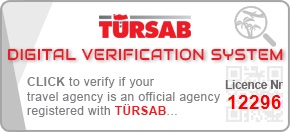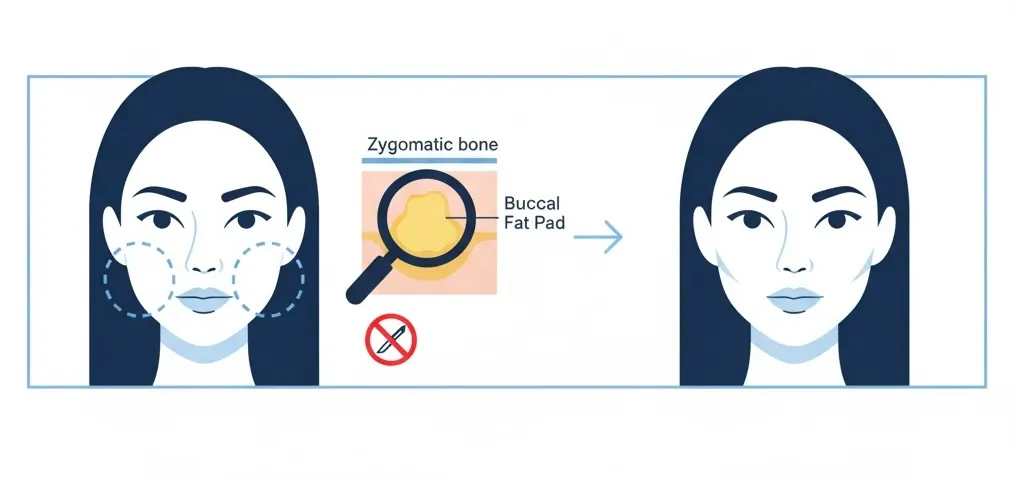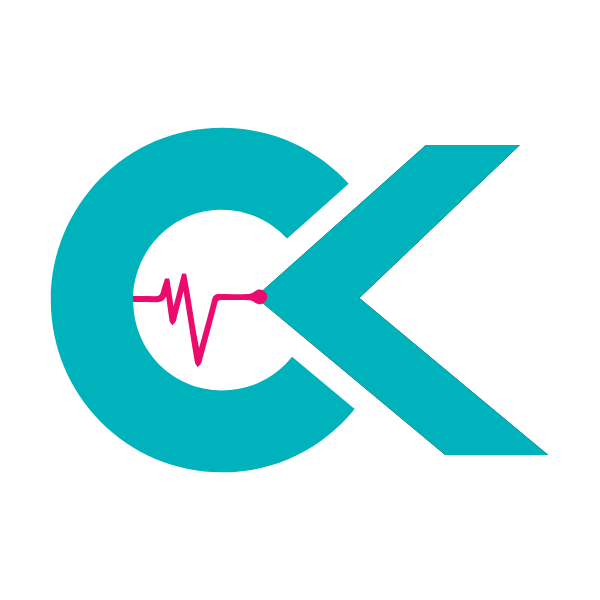In the evolving landscape of cosmetic surgery, the pursuit of refined facial aesthetics has led to a surge in specialized procedures aimed at enhancing natural contours. Among these, buccal fat removal in Turkey has emerged as a prominent choice for individuals seeking to achieve a more sculpted and less ‘chubby’ cheek appearance. This detailed guide explores every facet of this increasingly popular procedure, offering authoritative insights for international patients, particularly those from the United Kingdom, contemplating medical tourism for their aesthetic goals. Understanding the surgical process, recovery, potential outcomes, and the compelling reasons to consider Turkey is paramount for an informed decision.
Table of Contents
Understanding Buccal Fat Removal (Bichectomy)
Buccal fat removal, medically known as a bichectomy, is a surgical procedure designed to reduce the size of the buccal fat pads located in the hollow area of the cheeks, between the cheekbones and the jawbone. These fat pads are distinct from subcutaneous fat and are often resistant to diet and exercise, contributing to a fuller, rounder facial appearance, sometimes referred to as ‘chubby cheeks’. The procedure is typically sought by individuals who desire a more defined facial structure, emphasizing the cheekbones and creating a more V-shaped or angular jawline. It is a precise intervention, requiring a nuanced understanding of facial anatomy to ensure natural-looking and harmonious results.
The Anatomy of Buccal Fat Pads
The buccal fat pads are deep-seated fatty tissues that play a role in facial contouring, particularly in childhood, where they contribute to the characteristic plumpness of a baby’s cheeks. Their size can vary significantly between individuals and are not directly correlated with overall body weight. While they provide support and cushioning, oversized buccal fat pads can obscure the natural definition of the cheekbones and jawline, persisting into adulthood and influencing facial aesthetics. The removal of a portion of these pads can dramatically alter the facial silhouette, creating a more mature and refined look.
Ideal Candidates for Buccal Fat Removal
Identifying as an ideal candidate is the first crucial step in considering any cosmetic surgery. For buccal fat removal, candidates typically exhibit the following characteristics:
- They are in good general health, both physically and psychologically.
- They have realistic expectations about the outcomes of the surgery.
- They possess prominent, round, or ‘chubby’ cheeks that detract from their desired facial contour.
- They are unhappy with the fullness in the lower part of their cheeks, which persists despite a healthy lifestyle and normal body weight.
- They are non-smokers or willing to cease smoking for a significant period before and after the surgery, as smoking can impair healing.
- They understand that the results are typically permanent and that facial aging can affect the long-term appearance.
It is imperative to consult with a qualified and experienced plastic surgeon to ascertain suitability for the procedure, as individual facial anatomy and aesthetic goals must be thoroughly evaluated.
The Procedure: What to Expect During Buccal Fat Removal in Turkey
Embarking on a journey for buccal fat removal requires a clear understanding of the surgical process. When considering buccal fat removal in Turkey, patients benefit from advanced medical facilities and highly skilled surgeons who utilize meticulous techniques to achieve optimal aesthetic outcomes. The procedure itself is relatively straightforward, typically performed under local anesthesia, though general anesthesia may be an option depending on patient preference and surgeon recommendation. The entire process, from consultation to post-operative care, is designed for patient comfort and safety.
Surgical Steps
The surgical procedure for buccal fat removal is minimally invasive and involves several key steps:
- Anesthesia Administration: Local anesthesia is typically injected into the inside of the cheek, numbing the area. If general anesthesia is preferred, it will be administered by a qualified anesthesiologist.
- Incision: A small incision, usually 2-3 centimeters in length, is made inside the mouth, between the cheek and the gums, near the second upper molar. This intraoral approach ensures that there are no visible external scars.
- Fat Pad Excision: Through this incision, the surgeon carefully identifies the buccal fat pad. A precise amount of fat is then gently extracted. The amount removed is crucial for achieving a balanced and natural result, avoiding an overly hollowed appearance. The surgeon’s expertise in gauging the appropriate volume is paramount.
- Closure: Once the desired amount of fat is removed, the internal incisions are closed with dissolvable sutures. These sutures do not require removal and will naturally dissolve within a few weeks.
The procedure typically takes about 30-60 minutes to complete, making it a relatively quick outpatient surgery.
Recovery and Post-Operative Care
Effective recovery is as vital as the surgery itself for optimal results. Patients undergoing buccal fat removal should anticipate a relatively quick recovery period. Post-operative care is crucial for minimizing swelling and promoting proper healing. Here’s a general outline of the recovery process:
- Immediate Post-Op: Patients can usually return home the same day. There might be some mild discomfort, swelling, and bruising, which can be managed with prescribed pain medication.
- Dietary Restrictions: A soft diet is recommended for the first few days to a week to avoid irritating the incision sites and to prevent excessive chewing. Avoiding hot, spicy, or hard foods is advisable.
- Oral Hygiene: Maintaining excellent oral hygiene is critical to prevent infection. Patients will typically be advised to rinse their mouth with an antiseptic mouthwash several times a day, especially after meals.
- Activity Restrictions: Strenuous activities, heavy lifting, and intense exercise should be avoided for at least 1-2 weeks. Light activities can usually be resumed within a few days.
- Swelling and Results: Significant swelling will typically subside within a few weeks, but residual swelling can take several months (up to 3-6 months) to fully resolve. The final, contoured results become progressively more apparent as the swelling diminishes. It is important to have patience, as the full aesthetic impact of Face & Neck Lift in Turkey will take time to manifest.
Potential Risks and Complications
While buccal fat removal is generally considered safe, like all surgical procedures, it carries potential risks. These include, but are not limited to, infection, excessive bleeding, asymmetry, temporary or permanent nerve damage (leading to numbness or weakness in facial muscles), swelling, and dissatisfaction with aesthetic outcomes. Choosing a board-certified and experienced surgeon significantly mitigates these risks. A comprehensive discussion of potential complications will be part of the pre-operative consultation.
Why Choose Turkey for Buccal Fat Removal?
Turkey has solidified its position as a global leader in medical tourism, attracting patients from around the world, particularly for cosmetic procedures. The decision to undergo buccal fat removal in Turkey is often driven by a compelling combination of factors that collectively offer an exceptional patient experience and value proposition compared to options in the United Kingdom.
Cost-Effectiveness Without Compromising Quality
One of the most significant advantages of choosing Turkey is the considerable cost savings. Medical procedures, including complex plastic surgeries, are often significantly more affordable than in Western European countries or North America. This affordability does not come at the expense of quality. Turkish clinics and hospitals boast state-of-the-art technology, modern infrastructure, and adhere to international standards of care. Surgeons are often trained internationally and possess extensive experience.
| Service/Item | Turkey Price (GBP) | UK Price (GBP) |
|---|---|---|
| Buccal Fat Removal | £1,500 – £2,500 | £3,000 – £5,000 |
| Face Lift | £3,500 – £6,000 | £7,000 – £12,000 |
| Fat Transfer | £2,000 – £3,500 | £4,000 – £7,000 |
| Rhinoplasty | £2,500 – £4,500 | £5,000 – £9,000 |
| Eyelid Surgery (Blepharoplasty) | £1,200 – £2,000 | £2,500 – £4,000 |
Highly Experienced Surgeons and Advanced Facilities
Turkey is home to a cadre of highly qualified plastic surgeons renowned for their expertise in facial aesthetic procedures. Many have extensive experience performing buccal fat removal and other complex facial surgeries. Clinics are often accredited internationally, equipped with advanced surgical suites, and provide comprehensive patient care. This ensures a high level of surgical precision and safety, critical for delicate facial procedures. Patients also have options for complementary procedures such as Fat Transfer in Turkey to further enhance facial contours.
Comprehensive Medical Travel Packages
Many Turkish clinics and medical tourism agencies offer all-inclusive packages designed to make the patient journey seamless. These packages often cover aspects such as airport transfers, accommodation, pre-operative consultations, the surgery itself, post-operative check-ups, and even interpreter services. This holistic approach significantly reduces the logistical burden on international patients, allowing them to focus solely on their treatment and recovery. Cities like Antalya are popular destinations known for their medical tourism infrastructure.
Cultural Experience and Recovery Environment
Beyond the medical advantages, Turkey offers a rich cultural experience and a conducive environment for recovery. Patients can enjoy a period of recuperation in picturesque settings, often combining their medical journey with a relaxing holiday. This can contribute positively to overall well-being and a smoother recovery process. The warm hospitality and delicious cuisine further enhance the experience.
Medical Insights on Buccal Fat Removal
The efficacy and safety of buccal fat removal have been subjects of ongoing clinical review. A systematic review published in *The Journal of Craniofacial Surgery* highlighted that bichectomy, when performed by experienced surgeons using appropriate techniques, is a generally safe and effective procedure for facial contouring. The review emphasized high patient satisfaction rates and low complication rates, particularly when careful patient selection and meticulous surgical execution are prioritized. Key findings underscored the importance of pre-operative assessment to avoid over-resection, which could lead to an overly hollowed or aged appearance over time. The study also noted the procedure’s ability to achieve long-lasting results in suitable candidates, contributing to a more defined lower face.
Long-Term Outcomes and Considerations
While the immediate results of buccal fat removal are often striking, it is essential to consider the long-term implications. The fat pads, once removed, do not typically grow back. This means the results are permanent. However, the natural aging process will continue, and the face will undergo changes over decades. Some individuals may experience further hollowing of the cheeks as they age, which can be a concern if too much buccal fat was removed initially. This underscores the importance of a conservative approach and selecting an experienced surgeon who can anticipate future facial changes and tailor the removal to achieve balanced, age-appropriate contours.
Combining Procedures for Enhanced Results
Buccal fat removal can be a standalone procedure, but it is often combined with other facial aesthetic surgeries to achieve more comprehensive results. Common complementary procedures include:
- Facial Liposuction: To address stubborn fat deposits in the jowls or neck for a more defined jawline.
- Chin Augmentation: To balance facial proportions and enhance the profile.
- Cheekbone Augmentation: To further emphasize the midface contour in contrast to the reduced lower cheek volume.
- Dermal Fillers: To add volume to other areas of the face, such as the temples or nasolabial folds, maintaining overall facial harmony.
- Facelift: For patients seeking overall facial rejuvenation, buccal fat removal can be a component of a broader strategy to refine the lower face.
These combinations are discussed during the initial consultation to develop a personalized treatment plan that aligns with the patient’s ultimate aesthetic goals.
Comparing Medical Tourism: Turkey vs. UK
Prospective patients from the UK often weigh the advantages and disadvantages of undergoing cosmetic surgery domestically versus traveling abroad. The decision involves considerations beyond just price, encompassing quality, accessibility, and the overall patient experience.
| Factor | Turkey | United Kingdom |
|---|---|---|
| Cost | Significantly lower (often 50-70% less) | Higher |
| Quality of Care | High-standard, internationally accredited clinics, experienced surgeons | High-standard, regulated, experienced surgeons |
| Accessibility | Requires travel, visa (if applicable), coordination; often all-inclusive packages | Local, direct access, no travel burden |
| Recovery Environment | Opportunity for relaxing recovery in a tourist destination | Familiar home environment, close to support network |
| Waiting Times | Generally shorter | Potentially longer |
| Language Barrier | Interpreters often provided | Generally none |
This comparison highlights the core benefits that draw patients to Turkey for procedures like buccal fat removal. The blend of affordability and high-quality care often makes it a highly attractive option for those willing to travel.
Preparing for Your Journey to Turkey
Once the decision to proceed with buccal fat removal in Turkey has been made, careful preparation is essential to ensure a smooth and successful experience. This involves both medical and logistical considerations.
Pre-Operative Medical Preparations
- Comprehensive Consultation: Engage in detailed virtual or in-person consultations with your chosen Turkish surgeon. Discuss your aesthetic goals, medical history, and any concerns.
- Medical Clearance: Undergo necessary medical tests and evaluations as requested by your surgeon to ensure you are fit for surgery. This may include blood tests and a general health check-up.
- Medication Review: Discuss all current medications, supplements, and herbal remedies with your surgeon. You may need to discontinue certain medications, especially blood thinners, prior to surgery.
- Smoking and Alcohol: Cease smoking and avoid alcohol for at least two weeks before and after surgery, as these can negatively impact healing.
- Diet and Hydration: Maintain a healthy diet and stay well-hydrated in the weeks leading up to your procedure.
Logistical Arrangements
- Passport and Visa: Ensure your passport is valid for at least six months beyond your planned return date. Check visa requirements for Turkish entry for UK citizens.
- Flights and Accommodation: Book your flights and accommodation well in advance. Many clinics offer assistance with these arrangements or provide package deals.
- Travel Insurance: Purchase comprehensive medical travel insurance that covers cosmetic surgery complications and emergency medical care abroad.
- Companion: Consider traveling with a companion who can provide support during your recovery, though many clinics offer excellent post-operative care.
- Communication: Arrange for international mobile service or a local SIM card to stay connected.
CK Health Turkey: Your Partner for Buccal Fat Removal
At CK Health Turkey, we are dedicated to providing world-class medical aesthetics to international patients, including those seeking superior buccal fat removal in Turkey. Our clinics feature cutting-edge technology and a team of highly skilled, board-certified plastic surgeons who specialize in facial contouring. We understand the unique needs of patients traveling from abroad and offer comprehensive, tailored packages that ensure a seamless and comfortable experience from consultation through recovery. From initial inquiry to post-operative follow-up, our patient-centric approach prioritizes your safety, satisfaction, and aesthetic goals. We pride ourselves on delivering exceptional results that enhance your natural beauty with precision and care, affirming our position as a leading provider for procedures such as bariatric surgery and various plastic surgeries. Trust CK Health Turkey for your aesthetic journey.
To learn more about our services or to schedule a personalized consultation, please visit our website or contact our patient coordination team today. Your journey to a more refined facial contour begins here.
FAQs
How painful is buccal fat removal surgery?
Most patients report mild to moderate discomfort rather than severe pain. Pain medication prescribed by your surgeon effectively manages any post-operative soreness. The area will be numb during the procedure due to local anesthesia.
Will I have visible scars after buccal fat removal?
No, the incisions are made inside the mouth, between the cheek and gums. This ensures that there are no visible external scars from the procedure.
How long do the results of buccal fat removal last?
The results of buccal fat removal are generally considered permanent. Once the fat pads are removed, they do not typically regenerate. However, the natural aging process will continue to affect your facial appearance over time.
What is the recovery time for buccal fat removal?
Initial recovery, including significant swelling, usually takes 1-2 weeks. Most patients can return to light activities within a few days. The final results, as all residual swelling resolves, can take 3-6 months to fully become apparent.
Can buccal fat removal make my face look too hollow?
This is a common concern. An experienced surgeon will carefully assess your facial anatomy and remove an appropriate amount of fat to achieve a natural, balanced result, avoiding an overly hollowed or gaunt appearance. Patient selection and conservative removal are key.
Is buccal fat removal suitable for everyone?
No, it is not suitable for everyone. Ideal candidates are typically individuals with genuine facial fullness in the lower cheeks that is not due to excess weight. Those with naturally thin faces or older individuals who already show signs of facial hollowing may not be good candidates, as it could accentuate an aged appearance.
How much does buccal fat removal in Turkey cost compared to the UK?
Buccal fat removal in Turkey is significantly more affordable than in the UK, often costing 50-70% less. This includes the surgeon’s fees, anesthesia, and facility costs, and sometimes even comprehensive travel packages.
Are there any alternatives to buccal fat removal?
While surgery offers the most dramatic and permanent reduction, some non-surgical options like dermal fillers can be used to augment surrounding areas to create a more contoured look, or fat-dissolving injections might be considered for very localized, smaller fat deposits, though these are less common for buccal fat pads.



